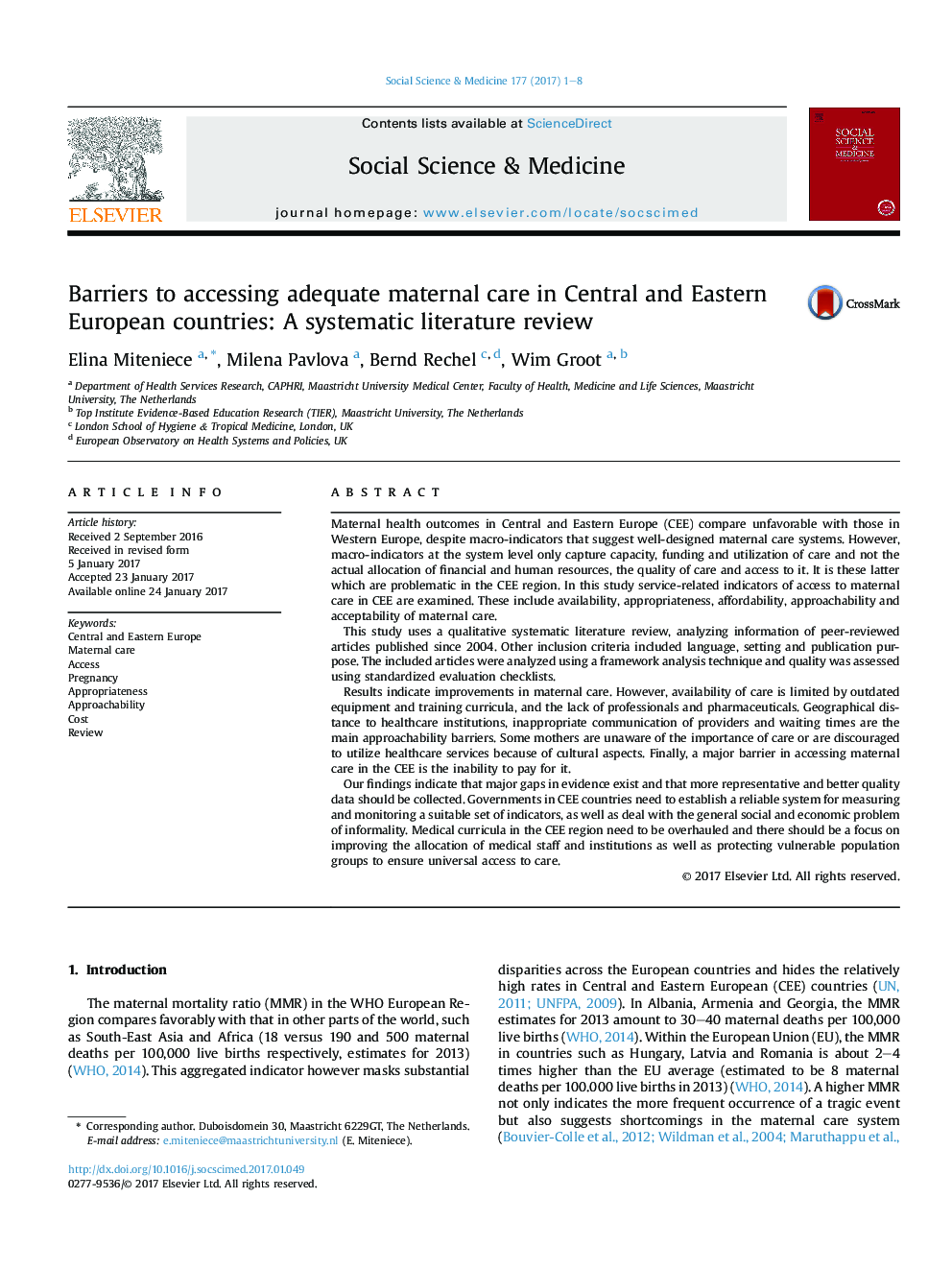| Article ID | Journal | Published Year | Pages | File Type |
|---|---|---|---|---|
| 5046705 | Social Science & Medicine | 2017 | 8 Pages |
â¢Skilled professionals, up-to-date care and equipment are lacking in CEE.â¢Distance and travel costs to facility is a barrier mostly in remote areas.â¢Care is often expert-centered with poor attitude towards patients.â¢Women are lacking information, autonomy and trust of medical doctors.â¢Major barrier is the inability to pay the high (in)formal payments.
Maternal health outcomes in Central and Eastern Europe (CEE) compare unfavorable with those in Western Europe, despite macro-indicators that suggest well-designed maternal care systems. However, macro-indicators at the system level only capture capacity, funding and utilization of care and not the actual allocation of financial and human resources, the quality of care and access to it. It is these latter which are problematic in the CEE region. In this study service-related indicators of access to maternal care in CEE are examined. These include availability, appropriateness, affordability, approachability and acceptability of maternal care.This study uses a qualitative systematic literature review, analyzing information of peer-reviewed articles published since 2004. Other inclusion criteria included language, setting and publication purpose. The included articles were analyzed using a framework analysis technique and quality was assessed using standardized evaluation checklists.Results indicate improvements in maternal care. However, availability of care is limited by outdated equipment and training curricula, and the lack of professionals and pharmaceuticals. Geographical distance to healthcare institutions, inappropriate communication of providers and waiting times are the main approachability barriers. Some mothers are unaware of the importance of care or are discouraged to utilize healthcare services because of cultural aspects. Finally, a major barrier in accessing maternal care in the CEE is the inability to pay for it.Our findings indicate that major gaps in evidence exist and that more representative and better quality data should be collected. Governments in CEE countries need to establish a reliable system for measuring and monitoring a suitable set of indicators, as well as deal with the general social and economic problem of informality. Medical curricula in the CEE region need to be overhauled and there should be a focus on improving the allocation of medical staff and institutions as well as protecting vulnerable population groups to ensure universal access to care.
